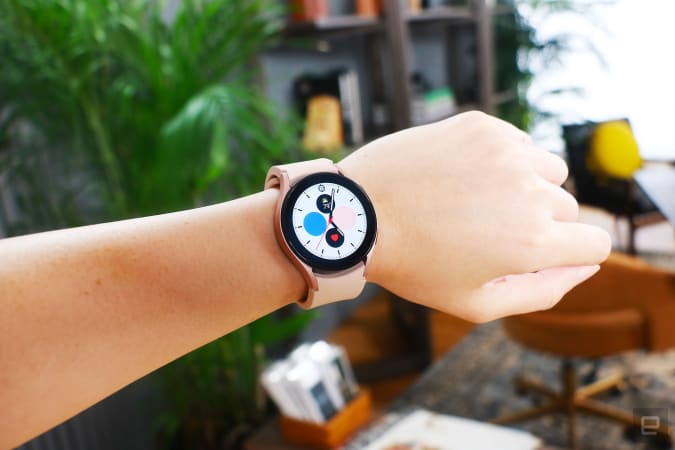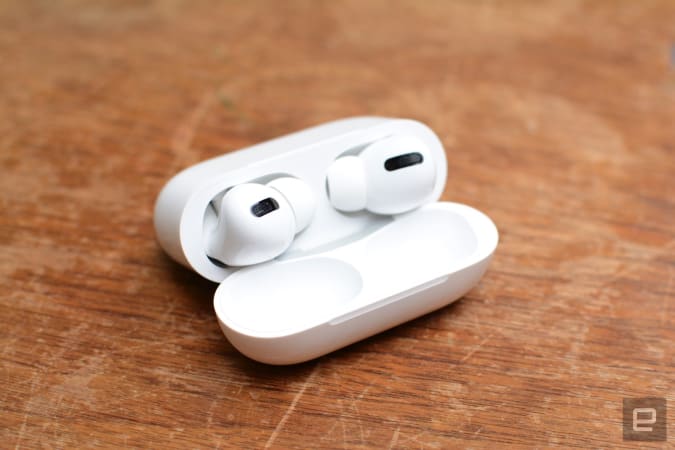The Morning After: Samsung unveils a more durable Galaxy Z Fold 3 with S Pen support
I’m not sold on foldable phones. They’re expensive, have questionable durability and — at least so far — don’t offer a compelling reason for the form factor. Having said all that, the Galaxy Z Flip 3, Samsung’s new clamshell foldable, is almost enough to change my mind.
Revealed alongside the Galaxy Z Fold 3, which unfurls into a squarish almost-tablet display, it’s the $1,000 Flip 3 that had me considering buying a foldable.
Maybe it’s because Samsung seems to be trying to address those issues I have. Both phones are cheaper (if not cheap) compared to their predecessors, with the Z Fold 3 now $200 less than the Z Fold 2 was at launch.
Engadget, Mat Smith
After the broken screen debacle of the original Galaxy Fold, Samsung is keen to stress the hardiness of its new premium phone, which it says is 80 percent stronger. I’m not sure how that increase was so precisely measured, but with IPX8 water resistance, a new stronger aluminum hinge and frame and a Gorilla Glass Victus coating, on paper at least, it sounds tougher.
The Z Fold 3 might have the tech advances, with S Pen support and an in-screen selfie camera that can camouflage itself, but the Z Flip 3 is the one that caught my attention when I had the chance to play with the phones at a London preview event. The Flip series seems like the foldable device for now, melding how we use our smartphones in 2021 with foldable screens that are, let’s be honest, still not quite perfect.
Samsung has expanded the external screen so it functions better for checking notifications or using the cameras without opening the Flip 3. Not that I need an excuse to flip open the satisfying hinge on the thing. I’ll wait for Cherlynn Low’s full review on both phones, however, before I start getting into preorders. Expect those very soon.
We do have a full review on Samsung’s newest true wireless earbuds to keep you occupied for now.
-Mat Smith
Samsung’s new wearable has a built-in body composition scanner.

Cherlynn Low / Engadget
Alongside the foldables, Samsung also had two wearables to reveal. These are the fruits of its renewed collaboration with Google. For the sake of clarification, Samsung’s getting rid of the “Active” branding from its existing lineup — the Watch 4 is the spiritual successor to the Watch Active 2 (there wasn’t an Active 3), while it’s adding the “Classic” moniker to the previous “regular” Watch line. The big differences between the two? A rotating bezel and a hundred bucks.
Continue reading.
The move comes after Apple suffered a major court loss in the dispute.
Apple has settled its 2019 lawsuit with Corellium, a company that builds virtual iOS devices used by security researchers to find bugs in iPhones and other iOS devices. The terms of the settlement weren’t disclosed, but the agreement comes after Apple suffered a major court loss in the dispute in late 2020.
Corellium’s software allows users to run virtual iPhones on a computer browser, giving them deep access to iOS without the need for a physical device. In addition to accusing Corellium of infringing on its copyright, Apple claimed the company was selling its product indiscriminately, and compromising the platform’s security.
Continue reading.
The intruder stole about $611 million thanks to an exploit.
A hacker stole about $611 million in Ethereum, Shiba Inu and other digital currencies from the decentralized Poly Network finance platform on August 10th, by exploiting a vulnerability. Less than a day later, however, the intruder sent a token indicating they were “ready to surrender” and started returning millions in funds. Second thoughts?
Continue reading.
At least, if you’re rocking a pair of AirPods Pro or Max.

Code inside the iOS 15 beta better explains how you’ll be able to locate any missing AirPods from your iPhone, at least if you have the Pro or Max versions.
9to5Mac says that those AirPods will be linked with your Apple ID and use Bluetooth to help you locate them when they go missing. Even if they’re not connected to your phone, you should still be able to find them on the map via the Find My network.
Continue reading.
It’s promising 940 Mbps upload and download speeds and a WiFi 6 router.
T-Mobile has launched a pilot offering fiber optic home internet service in New York City. It’s testing the service in select Manhattan residential buildings, offering 940Mbps upload and download speeds along with a WiFi 6 router. It appears to be a third-party service, and not T-Mobile’s own.
Continue reading.
Facebook piggybacked on Samsung’s Galaxy Unpacked event to introduce the option of importing your WhatsApp chat history between Android and iOS. It’ll initially reach Android devices, starting with Samsung phones running Android 10 or newer (including the new foldables), but it’ll eventually be available on both operating systems. The transfer includes photos and voice memos, and should reach users in the “coming weeks.” What’s a few weeks after waiting years?
Continue reading.
But wait there’s more
All products recommended by Engadget are selected by our editorial team, independent of our parent company. Some of our stories include affiliate links. If you buy something through one of these links, we may earn an affiliate commission.
For all the latest Technology News Click Here
For the latest news and updates, follow us on Google News.
